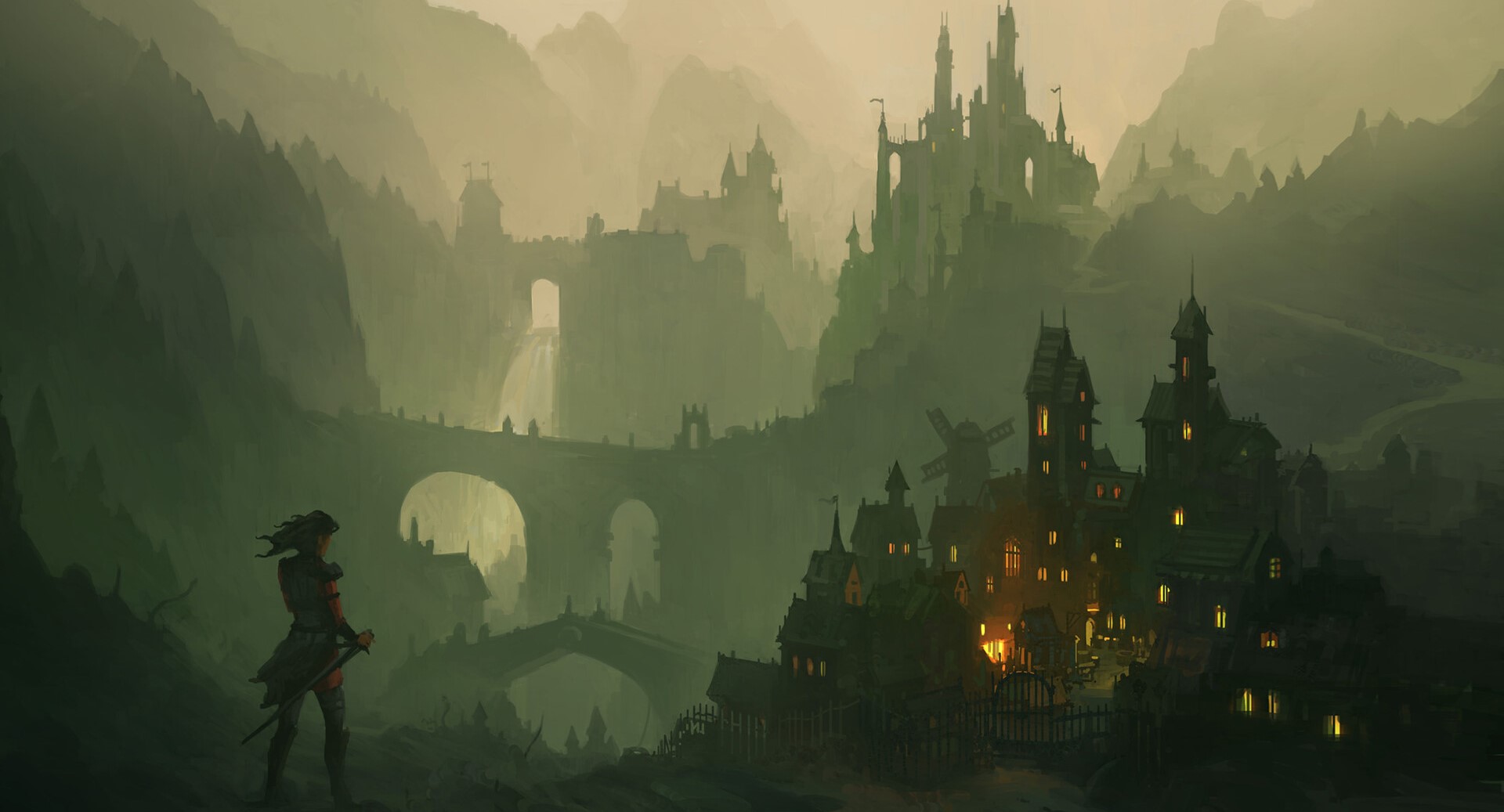Flamebourne, the plane of Fire
Arriving on the Plane of Fire was like stepping into the flaming maw of an ancient red dragon; if one didn't have protection or immunity from temperatures high enough to melt stone then death was swift. The following discussion assumes a visitor and all their clothing and gear had this capability and either did not need to breathe or could compensate for a superheated, often toxic atmosphere that could immolate one from the inside (think cloudkill plus incendiary cloud). In general, the more fluid the elemental fire, the hotter it was and the more damage it did to unprotected material.
Unlike the other three elemental planes, the Plane of Fire had normal gravity and a landscape, although most of the "ground" was made primarily of loosely packed elemental fire and felt like walking in a swamp of hot coals. The rivers and oceans were filled with a more liquid version of the same stuff and swimming worked normally as a mode of transportation. Non-native flying creatures found the atmosphere thin and therefore did not have their usual speed or maneuverability. Visibility was hampered by the smoke coming off the flames engulfing, but not consuming, nearly every solid, liquid, or gas (and creature) on the plane. What one could see was usually distorted by heat ripples. Geographic features such as hills, mountains, and cliffs did not have a geologic lifespan because even the more solid areas slowly moved like a subterranean magma flow as seen on the Prime Material Plane. Permanent physical structures were very rare.
If the Plane of Fire had weather, it was of course hot and deadly. Rains of hot ash moved about like thunderstorms, threatening those on or near the ground with hot embers and blinding ash. Those in the air had to watch out for clouds of superheated steam blowing around and condensing scalding water on exposed surfaces. The water quickly evaporated and the cycle began anew. Easier to avoid but just as deadly were the rivers of magma and "firefalls". Matter from other planes either evaporated, burned to ash, or melted into magma. Magma mixed with elemental fire formed a rapidly moving, incredibly hot slurry that coursed around the terrain and occasionally cascaded over a cliff edge to create a firefall, often manifesting an elemental vortex in the spectacular display. The Great Wheel cosmology model explained these hazards and others as pockets of elements from all the other elemental, para-, and quasi-elemental planes that got sucked into the Plane of Fire and cast adrift to face their fate. Cold spots could even be found where it felt like the middle of the Raurin desert at midday. With a guide, a traveler could approach the borders with the other planes, where the smoke finally choked out the fire, or the fire became nothing but cold ash, or the molten earth absorbed the fire, or the radiance ultimately outshone the fire.
The dangers of the plane could not be overstated, but those that survived the trip saw wonders and beauty at nearly every turn. Flame colors spanned the rainbow, from the vermilion of a forge hearth to the yellow-white of heated iron, from the blues and greens of alchemical reactions to the familiar candle-flame yellows and oranges. The conflagration formed fountains, jets, sheets, rivers, waves, walls, rains, cascades, clouds, swirls, and pits of brilliant incandescence on a scale found nowhere else.
Type
Plane of Existence
Owner/Ruler



Comments